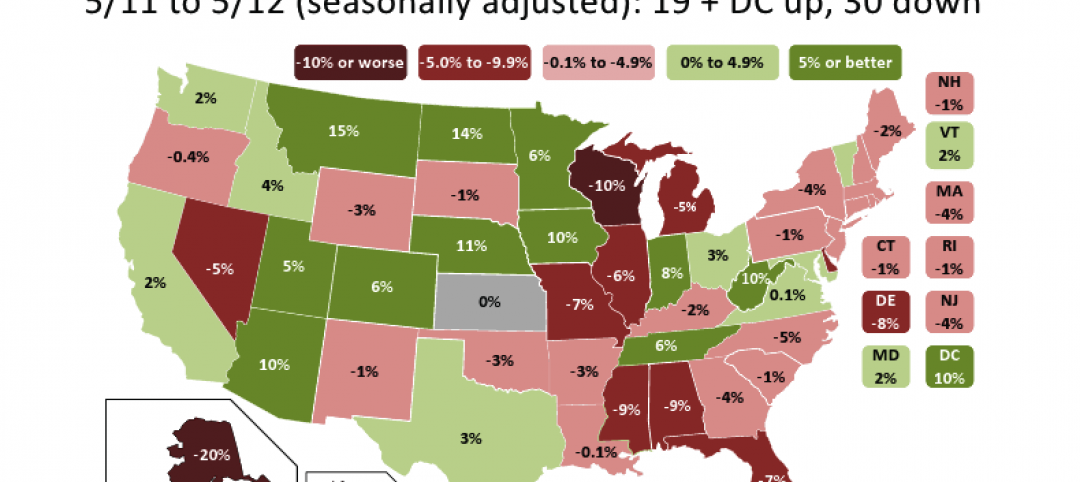Women account for more than half of the U.S. population. But even with significant gains over the past 25 years, their numbers and positions among the ranks of practicing architects appear to have stalled.
The reasons could be a combination of too few role models, mentors, and advancement opportunities, based to a statistical analysis of women’s progress in this field by the Association of Collegiate Schools of Architecture (ACSA).
Looking at recent data from a wide range of sources—including the Bureau of Labor Statistics, AIA, National Architectural Accrediting Board, the National Center for Education Statistics, and the National Council for Architectural Registration Boards—the association found that while the number of female architectural students and graduates has stabilized at around 40%, the number of women working in architect roles has also stopped increasing, and hasn’t gone much higher than 25%.
Indeed, AIA’s Foresight Report indicated that, in 2011 (the latest year for which data were available), only 30% of its women members were associates in their firms, and only 17% were principals or partners. In fact, just 15% of AIA’s licensed members were women that year. And a mere 13% of Intern Development Program supervisors, who review the work of intern architects submitting IDP hours, were female.
“Even with a sizable margin of error it is clear that there are far fewer women in practice than in school,” said Lian Chikako Chang, ACSA’s Director of Research and Information, who authored this report.
The reasons why this “leaky pipeline” persists, however, are less clear.
While Chang doesn’t state this outright, the perception of women architects as second-class citizens might have its roots in academia, where only around one quarter of lecturers, directors, heads and chairs of U.S. architectural schools are female, and only 19% of deans.
It could also be argued that women are leaving the profession at higher rates than men because they are discouraged by the lack of industry recognition their work receives. Only 5% of all TOPAZ Medallion recipients have been women, and about the same percentage of Pritzker Prize winners. Since 1907, only one of the 69 AIA Gold Medals has been awarded to a woman, and that was posthumously in 2014.
“With the share of awards going to women increasing by about 5% each decade, if we continue at this pace we’ll be waiting until 2080 to see a 50-50 split,” Chang notes sardonically.
While the author offered no specific prescriptions, Chang asserted that a more systematic approach to professional development will be required in order to encourage and support women in progressing and achieving as architects at rates more equal to those of men.
“The data reviewed here suggest that we should focus particularly on two areas: first, what happens before applying to and enrolling in architecture school; and second, what happens at higher levels in the profession, academia, and related practices,” she said.
Related Stories
| Jul 19, 2012
AEC firms ready to dive into public projects
But the size of the pool keeps shrinking for the Top 25 AEC firms in the Government Sector.
| Jul 19, 2012
BIM finally starting to pay off for AEC firms
In surveying Giants 300 firms about BIM, we went right for the jugular: Is BIM paying off—through cost savings, higher quality, or client satisfaction? Here’s what they told us.
| Jul 19, 2012
Contractors finally ‘moving off the bottom’
C and CM Agent + PM Giants 300 Firms also taking steps to improve project efficiency.
| Jul 19, 2012
The best states for a construction job
The top anticipated engineering and skilled labor shortages according to a survey of 2,223 construction industry professionals.
| Jul 19, 2012
Suffolk Construction launches subcontractor development series
Professional certificate program to provide core construction management skills to disadvantaged, minority, and women business enterprises.
| Jul 19, 2012
Construction begins on military centers to treat TBI and PTS
First two of several centers to be built in Fort Belvoir, Va. and Camp Lejeune, N.C.
| Jul 18, 2012
U.S. engineering firms set sail for foreign ports
Other E/EA Giants 300 firms are just dipping their toes into foreign waters, still looking for international business but choosing not to establish additional offices.
| Jul 18, 2012
Architecture giants spreading their wings
A/AE Giants 300 rankings reveal firms branching out globally, merging, adding services.
| Jul 18, 2012
Green expert Kats joins GreenWizard as an advisor
Kats' role is to help further expand GreenWizard’s impact in the sustainable construction industry.
| Jul 18, 2012
Construction employment stagnates in June
Lack of hiring in construction combined with job growth elsewhere threatens to create skilled-labor gap once contractors are ready to hire again.

















